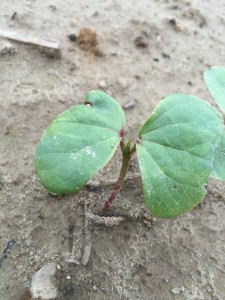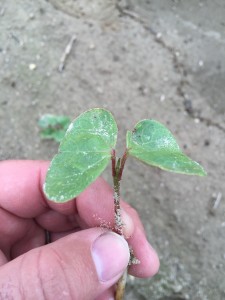It’s Time to be Looking at Emerged Cotton for Thrips (Collins, Reisig, Edmisten, & York)
go.ncsu.edu/readext?411947
en Español / em Português
El inglés es el idioma de control de esta página. En la medida en que haya algún conflicto entre la traducción al inglés y la traducción, el inglés prevalece.
Al hacer clic en el enlace de traducción se activa un servicio de traducción gratuito para convertir la página al español. Al igual que con cualquier traducción por Internet, la conversión no es sensible al contexto y puede que no traduzca el texto en su significado original. NC State Extension no garantiza la exactitud del texto traducido. Por favor, tenga en cuenta que algunas aplicaciones y/o servicios pueden no funcionar como se espera cuando se traducen.
Português
Inglês é o idioma de controle desta página. Na medida que haja algum conflito entre o texto original em Inglês e a tradução, o Inglês prevalece.
Ao clicar no link de tradução, um serviço gratuito de tradução será ativado para converter a página para o Português. Como em qualquer tradução pela internet, a conversão não é sensivel ao contexto e pode não ocorrer a tradução para o significado orginal. O serviço de Extensão da Carolina do Norte (NC State Extension) não garante a exatidão do texto traduzido. Por favor, observe que algumas funções ou serviços podem não funcionar como esperado após a tradução.
English
English is the controlling language of this page. To the extent there is any conflict between the English text and the translation, English controls.
Clicking on the translation link activates a free translation service to convert the page to Spanish. As with any Internet translation, the conversion is not context-sensitive and may not translate the text to its original meaning. NC State Extension does not guarantee the accuracy of the translated text. Please note that some applications and/or services may not function as expected when translated.
Collapse ▲The 2016 planted season has been frustrating for many NC cotton growers thus far. There have been several short periods of optimal temperatures and soil moisture allowing producers to make some progress with planting, however these short “good” windows have been followed by intermittent cool spells and intense rains in many places. These cool and wet spells have noticeably hindered planting progress, have necessitated replants due to rotting seed and poor stands, and at best have slowed emergence. With that said, acceptable stands have also been observed in many areas as well.
For slow emerging cotton planted in late April and early May, thrips control from seed treatments and in-furrow insecticides is likely beginning to diminish, therefore growers need to be actively scouting for thrips damage to determine if foliar sprays are justified. Many growers have reported slower-than-normal emergence in places, and there have also been some reports of intense thrips activity in a few areas as well. Please see a previous article from Dr. Reisig in 2015 concerning thrips control options and the timeliness of foliar sprays (http://cotton.ces.ncsu.edu/2015/05/should-you-spray-for-cotton-thrips/). There will likely be several fields that do not need any foliar sprays, if growth is vigorous and at-planting control measures have sufficed. However, this can only be determined through frequent and thorough scouting not just for thrips injury, but for the presence of live thrips. The presence of immature thrips especially signals that prior at-planting control measures may be weakening, and that thrips are surviving and reproducing. Remember that cotton is most sensitive to thrips damage when the 1st true leaf begins to appear between the cotyledons, as illustrated in the photos below. Although foliar sprays at later stages (2-3 true leaves) may occasionally benefit yields, targeting sprays at the 1st true leaf has been proven to be the most effective.
Growers should also pay attention to any herbicide injury that may have occurred. Although little injury has been reported to date, herbicide injury slows down seedling growth, allowing thrips to feed longer on developing leaves. In many cases, at-planting control measures may expire before seedlings “come out” of any transient herbicide injury and reach the 4-5-leaf “safe stage” from thrips. A well-timed foliar spray, when scouting has suggested that thrips are present, can alleviate most issues related to herbicide injury.




